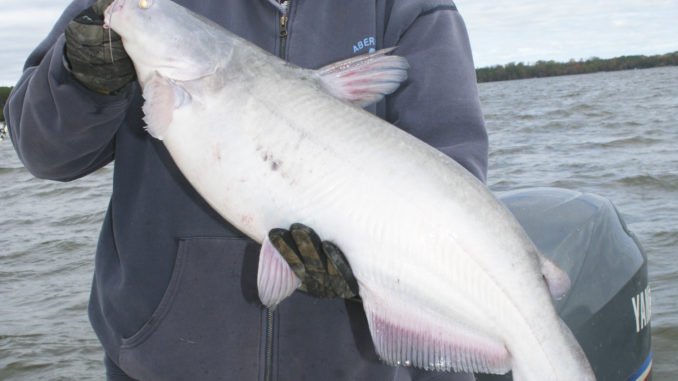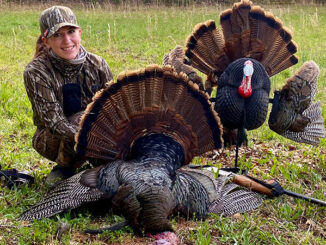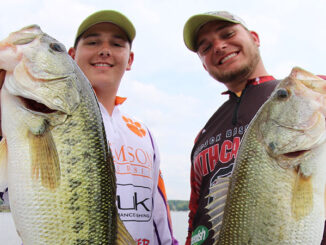
November might be the most-consistent time of year to catch big blue catfish and big flatheads on Clarks Hill Lake, just as it is on other South Carolina lakes, according to Chris Simpson who previously guided on Lake Monticello, Lake Murray and Lake Greenwood before moving to McCormick, S.C., 18 months ago to guide on Clarks Hill.
“It is an opportunity to concentrate on one lake instead of two or three different lakes,” he said. “Clarks Hill has everything I like to catch in one place, so I don’t have to go to different lakes now.”
Simpson said the big catfish bite is pretty consistent from Halloween through Thanksgiving and even on into the Christmas season.
“Twenty- to 40-pound fish are fairly common and sometimes bigger fish when you are targeting them,” he said.
Two methods are effective for targeting big catfish, he said, drifting and anchoring.
“Anchoring is plenty effective and sometimes may be a little better than drifting,” he said, noting that the key is the migration of bait.
“Most of the fish are going to be following the bait, whether it is schools of herring or shad. If there is a big concentration of bait in the creeks, you will find some fish in there, too,” said Simpson (864-992-2352), who likes to anchor on ledges near creek channels or on points that intersect with the creek channel. Big fish can be around, “as long as there are baitfish present and there are good marks underneath them on the graph”
Once that type of situation is found and the anchors are set, he said it pays to be patient.
“You may need to sit there a good while, maybe up to an hour-and-a-half,” he said. “But those types of areas are highly traveled, so you may sit there 30 to 45 minutes without even a nibble, and then a group will come through, and you may catch two or three nice catfish in a short time.”
If after giving creeks a good time to produce with little to show for it, Simpson said he will probably move to main-lake humps and points and use the same anchoring setup.
“Just like in the other lakes, when I am targeting big catfish, I stick with tougher baits like gizzard shad, white perch and bream,” he said. “Herring will catch big fish, too, but when you are anchored down, sometimes smaller fish will tear the herring off. You may not see the rod tip move when you have herring on for bait, but when you reel in you may not have any bait left on your hook.”
As is the case with other species, when the water temperature begins to cool down with the approach of winter, fish will begin to move deeper, noted Simpson, who makes one change when targeting flatheads over blues this time of year, he said.
“There are lots of rocky points and drops with big boulders on them. Anchoring on those areas and using live bream for bait really increases your chances of catching a big flathead,” Simpson said.



